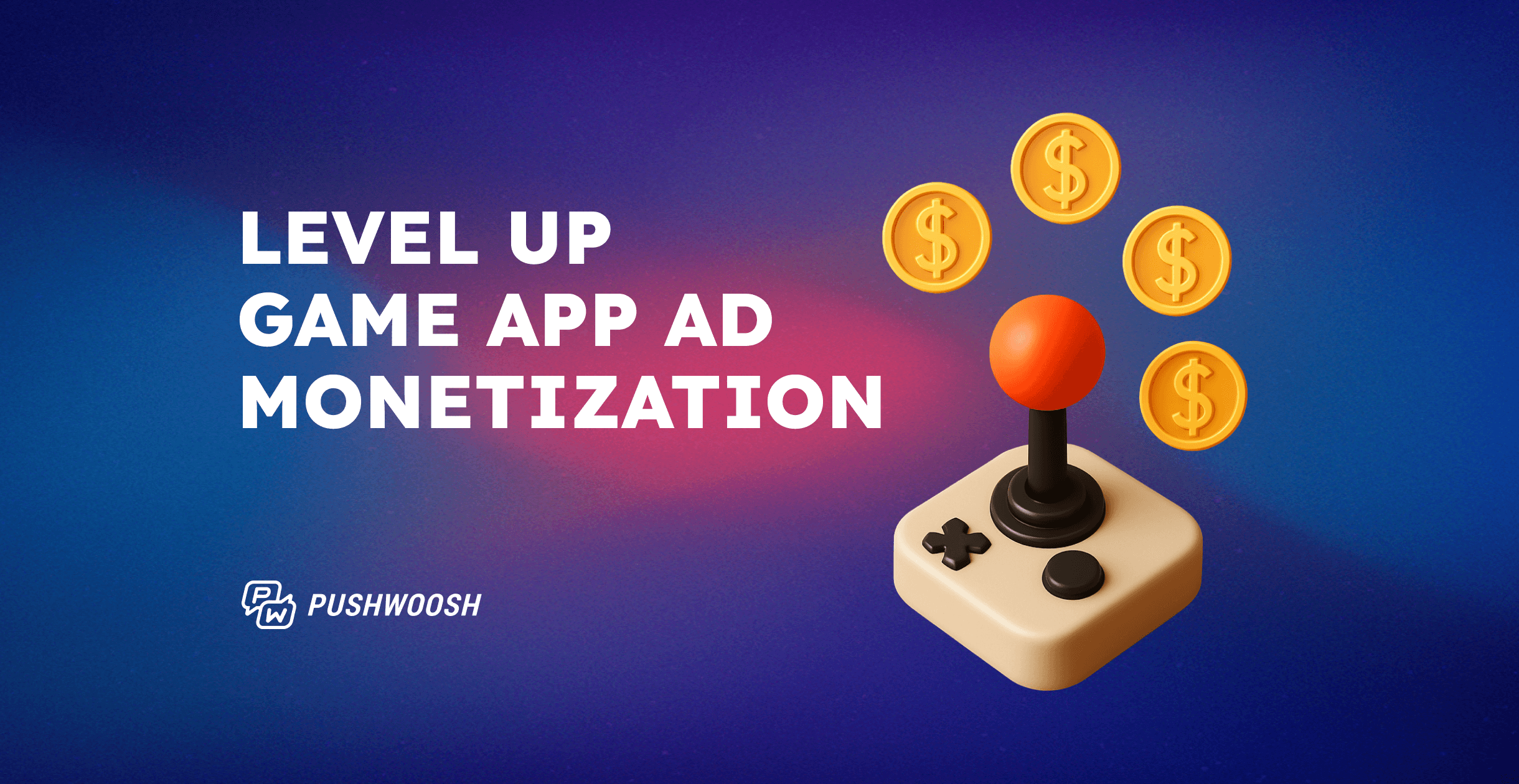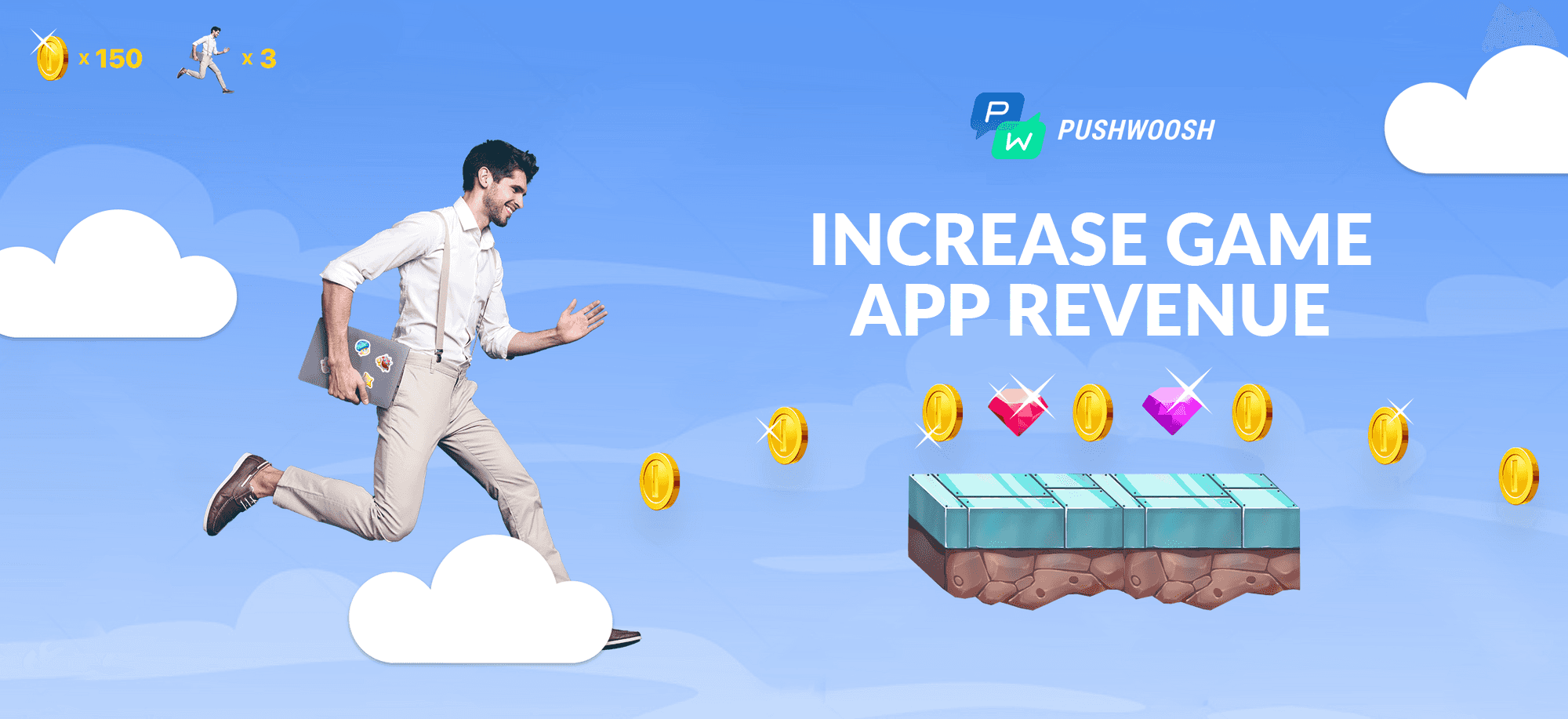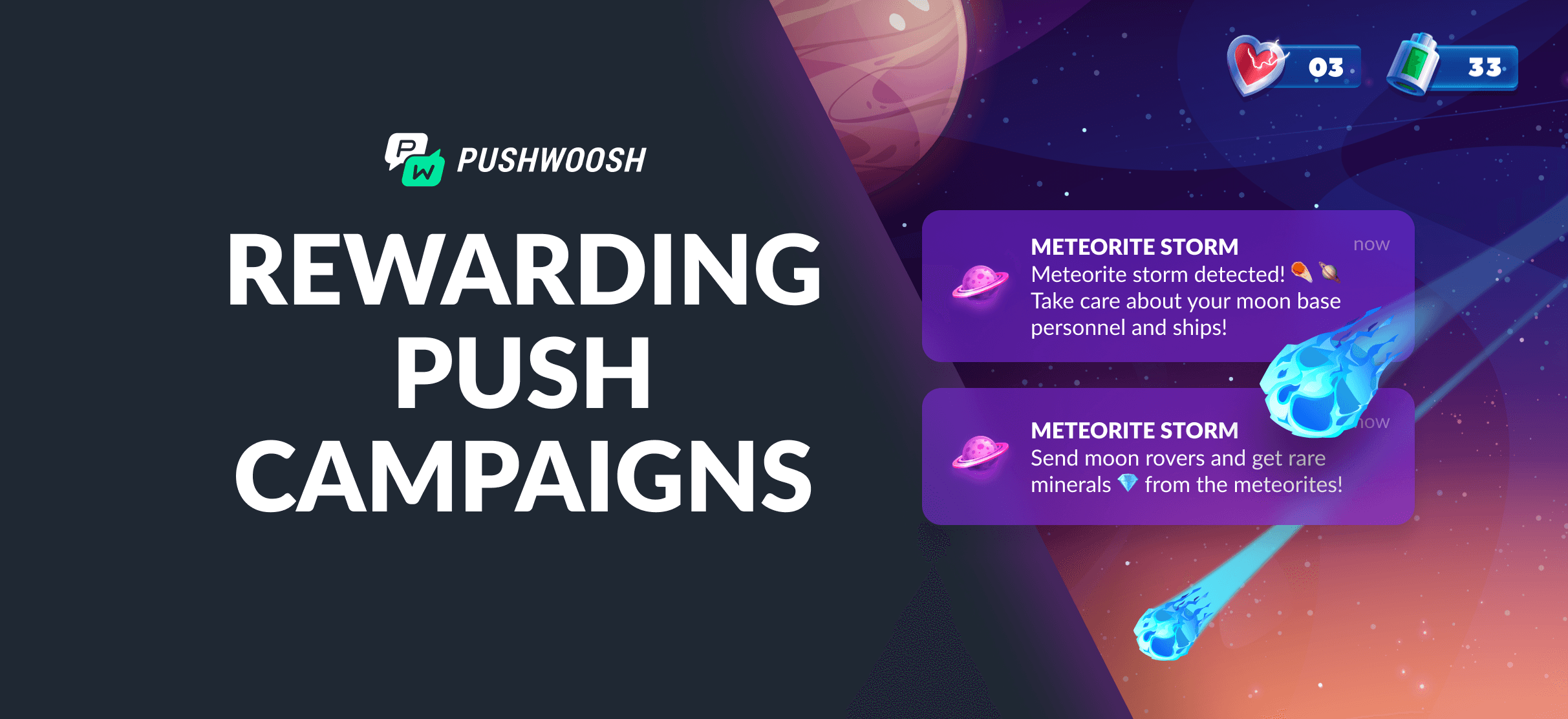Segmentation strategies to triple DAU, MAU, and retention in game apps
As a mobile game marketer, we bet you’re focused on increasing engagement, re-engaging inactive users, and boosting revenue. The key to achieving these goals is to master the art of segmentation.
To unlock the full potential of segmentation, you need powerful tools like Pushwoosh. Imagine the possibility of tripling your DAU, MAU, and retention rates by effectively segmenting your users. It’s perfectly attainable, and in this post, we’ll share three practical ways to segment your players, streamline your communication processes, and improve your KPIs.
What are the benefits of segmenting mobile players?
Player segmentation is an effective approach that mobile game marketing teams can use to enhance player retention rates, boost monetization efforts, and make data-informed decisions.
- Higher retention rates are the first outcome of personalized and localized communication, made possible with smart segmentation. Engaging players through tailored promotions and relevant online events can turn them into high-value customers and brand ambassadors in the long run.
- Enhanced monetization, the ultimate objective of personalized marketing, may come from your ability to offer dynamic pricing for different player segments. This may involve adjusting prices based on player behavior and seasonality, offering location-based pricing, or creating dynamic product bundles based on the player’s progress in the game.
- Better-informed decisions are possible if you analyze each player segment’s effectiveness. Segmentation helps foresee potential losses and gains before launching your next campaign, which helps introduce the most cost-efficient communication campaigns. Finally, user segmentation permits the effective allocation of game development and support resources.
How can you pinpoint player segments to reach the most profitable audience?
1️⃣ Prioritize which challenge you’re going to tackle.
For example, our recent study showed that mobile game marketers use segmentation to create content that converts. Your KPIs will signal whether you’re making progress in the chosen direction.
2️⃣ Understand user behaviors, preferences, and demographics.
For this, you need a robust game analytics platform like GameAnalytics, Adjust, AppsFlyer, or Mixpanel.
3️⃣ Translate data into precisely targeted personalized messages
Your ally here is an actionable customer data platform like Pushwoosh.
As a game marketer, gathering data on every action that players take within your app is crucial. This will help you understand and implement solutions at every step. You don’t always need to focus on the bottom of the funnel; sometimes, ensuring players complete basic journeys, like crossing the first level, can significantly impact the overall success of your game.
Which segmentation strategy should you choose?
| Challenge | Data examples | Segmentation type |
|---|---|---|
| Retain active users | 1. Time spent playing the game 2. # of logins during the day/week 3. Location 4. Language 5. Online events attended | Engagement-based |
| Increase the value of your users | 1. # of purchases 2. Purchase sum 3. Items purchased | Purchase behavior-based |
| Re-engage players that have been inactive recently | 1. Last login date 2. Level reached 3. Time spent in the game | Retention-based |
Segment active users to retain them
You’ll need diverse data to boost player retention with tailored communication.
Imagine wanting to encourage new players from Spain to continue playing your soccer game. To accomplish this, you may want to send them targeted push notifications inviting them back to the game.
Consider capturing players’ names, time spent in the game, the number of times they’ve logged in, the levels they’ve reached, their location, and their language.
You can collect this data in your analytics platform and then push it to Pushwoosh using our 3rd party integrations.

Once connected to Pushwoosh, you can create the required segment of players in less than 60 seconds using tags and events.

Once your segment is ready, you can contact these users with personalized and localized push notifications. You may choose to communicate something like:
| English | Translated to Spanish |
|---|---|
{Name}, the game misses you! Come back and conquer level {Level} like the champ you are! ⚽ | {Name}, ¡el juego te extraña! ¡Vuelve y conquista el nivel {Level} como el campeón que eres! ⚽ |
This push notification in Spanish is a sure way to lure players back to the game, and Pushwoosh has all the tools you need to send personalized multilingual messages.
As a final step, embed your message within a Customer Journey and schedule the campaign.

To identify your most active and valuable players, it’s essential to analyze user session length and the frequency of their visits to understand how often they return to your game. Additionally, understanding the cohort bucket of each key action item that you wish your users to complete is crucial.
For example, in battle royale games, you should understand the cohort of each activity that leads to your main goal, such as in-app purchases. A sample cohort flow would be:
Game Trial >> Game Type >> Game Completions >> In-Game Events >> First Purchase >> and so on.
What metrics and trigger events would you look at?
Basic metrics like Daily Active Users (DAU), Weekly Active Users (WAU), Retention Rate, and Lifetime Value (LTV) are key.
The trigger events we typically monitor are player actions and performance-based events, such as reaching a certain score or completing a specific level.
Segment players who make purchases to drive more revenue
Consider reaching out to paying players and offering them exclusive deals to encourage additional purchases. Keep track of their purchase history, the total amount spent, and the specific items bought to tailor persuasive offers.
For example, let’s promote a new in-game item to players who spent at least $15 last month. This user segment can be built with Pushwoosh’s default PW_InAppPurchase event.

You can target the segment with personalized in-app messages. Create them using one of the in-app message templates built in Pushwoosh.

Now, set up how the target segment will receive this offer and what will happen next. Automate your in-app message sending to the selected segment with Customer Journey Builder and wait for players to claim the offer. If a player doesn’t claim the offer within 12 hours, a push notification will be sent as a reminder that the offer is about to expire.
Engaging a segment of paying players with in-app messages and push notifications with Pushwoosh
Remember to set up a conversion goal for your campaign—in this case, in-app purchases. This way, you can analyze your campaign’s performance on the spot and study your Conversion Funnel for more insights.
Segment users to re-engage them
To successfully re-engage users, it’s crucial to tap into their motivation. For example, you may have noticed that users stop playing when they run out of coins. Therefore, you should offer them a chance to earn coins effortlessly, such as by simply logging into the game.
Segment your users by their last login date. Then, reach out to them with a compelling message.

Re-engaging push notification
Diversify your communication methods. If certain players are not responsive to push notifications or cannot be reached through this channel, email them, just like we did in the campaign example below.
Re-engaging recently active players with Pushwoosh
You’ve run the campaigns, and now it’s time to analyze the results and adjust your strategy based on the outcomes.
Steer clear of these threetraps when working with user segments
🪤 Trap #1: Setting unclear target segments
Take a moment to compare these two target segments and notice the difference:
Too broad: “Let’s find users who make big purchases.”
Specific: “Let’s find users who spend over $15 monthly.”
Defining a specific target segment enables more precise tracking and analysis of campaign performance.
RFM segmentation creates specific and practical user segments that take into account players’ level of engagement and purchase history. Identify your game’s Champions, Loyal customers, and Potential Loyalists. Take the time to prepare tailored offers for them, because these are the segments with the highest potential ROI on your efforts.
🪤Trap #2: Deciding on a segment based on limited data
Avoid: Analyzing your segment’s behavior only within a limited period (say, the last 30 days). If you do so, your conclusions could be skewed. In a short timeframe, temporary external factors, such as seasonality or a running campaign, could influence user behavior.
Do better: Validate your data across different timeframes and account for external factors, as you risk making decisions based on inaccurate or incomplete information.
To avoid this, Pushwoosh supports you by offering the option to analyze data beyond the last 31 days. Interested? Get in touch with our team.
🪤Trap #3: Neglecting individual segments in your analytics
Avoid: Examining your campaigns’ performance without considering the performance of specific user segments. For example, you might become frustrated if you only look at the overall campaign performance and see that the average CTR and conversion rate are below average.
Do better: Review your segment’s performance regularly in our reporting dashboards to ensure you’re on the right track.

Segmentation: Illuminating the path to mobile gaming success
Segmentation is a powerful approach for game studios to engage, monetize, and retain their player base. However, successful segmentation is an ongoing commitment. It calls for continuous dedication to data analysis, iterative testing, and adaptation to evolving user preferences. Game studios that master segmentation will undeniably gain a competitive advantage, captivating players with custom experiences that resonate on a deeper level.









